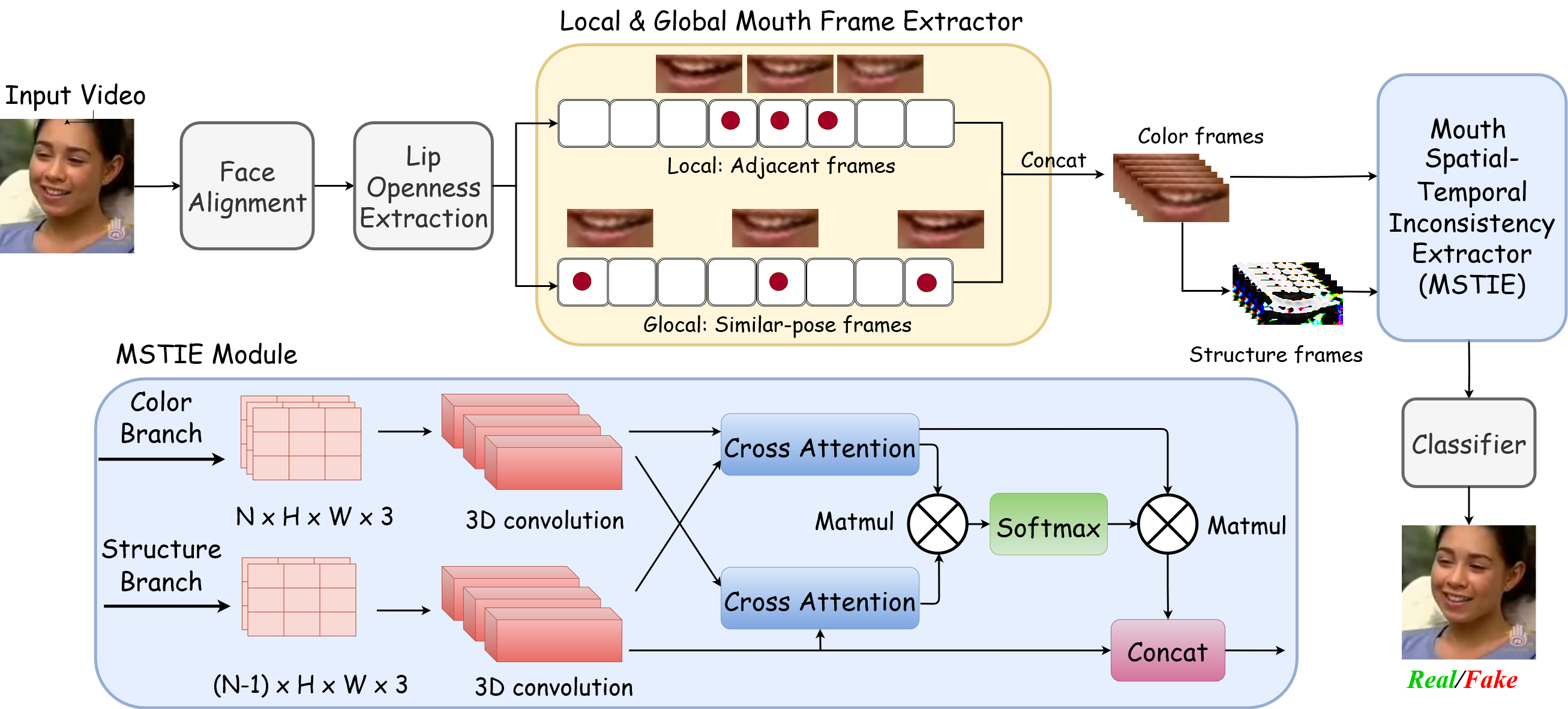Soumyya Kanti Datta, Shan Jia, Siwei Lyu
Accepted by ICME 2024
A lip-syncing deepfake is a digitally manipulated video in which a person's lip movements are created convincingly using AI models to match altered or entirely new audio. Lip-syncing deepfakes are a dangerous type of deepfakes as the artifacts are limited to the lip region and more difficult to discern. In this paper, we describe a novel approach, LIP-syncing detection based on mouth INConsistency (LIPINC), for lip-syncing deepfake detection by identifying temporal inconsistencies in the mouth region. These inconsistencies are seen in the adjacent frames and throughout the video. Our model can successfully capture these irregularities and outperforms the state-of-the-art methods on several benchmark deepfake datasets.
Python 3.10- Install necessary packages using
pip install -r requirements.txt. - Download the dlib’s pre-trained facial landmark detector from here and put it in the same folder as demo.py.
- Download LipInc model weights from here and place it under ./checkpoints folder
- The input video should have the face of only 1 subject in the entire video.
- The input video should have 1 face per frame.
The input_video should be in mp4 format :
python demo.py --input_path {input_video_path} --output_path {output_path}
The demo video is saved (by default) as {input_video_name}_demo.mp4.
@article{datta2024exposing,
title={Exposing Lip-syncing Deepfakes from Mouth Inconsistencies},
author={Datta, Soumyya Kanti and Jia, Shan and Lyu, Siwei},
journal={arXiv preprint arXiv:2401.10113},
year={2024}
}
This work was supported in part by the US Defense Advanced Research Projects Agency (DARPA) Semantic Forensic (SemaFor) program, under Contract No. HR001120C0123, National Science Foundation (NSF) Projects under grants SaTC-2153112, No.1822190, and TIP-2137871. The views and conclusions contained herein are those of the authors and should not be interpreted as necessarily representing the official policies, either expressed or implied, of DARPA, NSF, or the U.S. Government.
